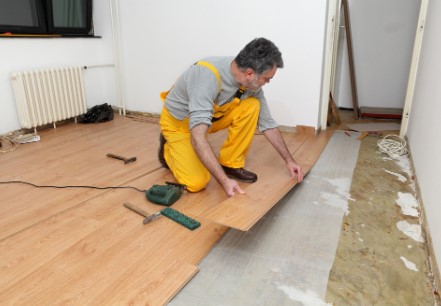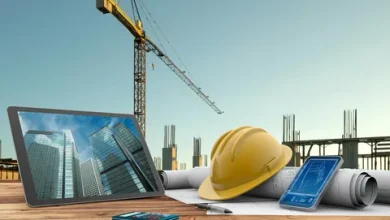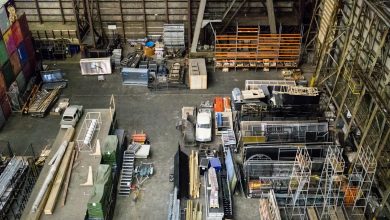Types of Flooring Problems That Require Immediate Repair
Types of Flooring Problems That Require Immediate Repair

Flooring serves as the foundation of our homes, providing us with comfort and stability as we go about our daily lives. From the soft warmth of carpet to the sleek elegance of hardwood, different flooring materials offer unique benefits and aesthetics. However, like any other part of a home, flooring is not immune to problems. Some issues can arise unexpectedly and demand immediate attention to prevent further damage. In this article, we will explore various types of flooring problems that require prompt repair to maintain the integrity and beauty of your living space.
1. Water Damage
Water damage is a pervasive issue that can affect all types of flooring. Whether it’s a sudden flood, a leaking appliance, or even high humidity levels, excess moisture can wreak havoc on your floors. Hardwood flooring can warp and buckle, while laminate flooring may swell and become uneven. Tile grout can deteriorate, and carpets can become a breeding ground for mold and mildew. If you notice signs of water damage, such as discolored spots, a musty odor, or changes in texture, addressing the problem promptly is crucial. Ignoring water damage can lead to more extensive and costly repairs down the line.
2. Cracks and Chips
Cracks and chips can occur in various flooring materials, such as tiles, concrete, and even hardwood. These imperfections not only compromise the aesthetics of your space but also pose a safety risk, especially if the flooring is uneven. In tile flooring, cracks can spread if left unchecked, resulting in the need to replace larger sections. Cracks in hardwood flooring can indicate underlying structural issues or excessive moisture levels. By addressing cracks and chips immediately, you can prevent them from worsening and ensure a smooth, safe surface for your family.
3. Squeaks and Creaks
Walking through a room with squeaky floors can be more than just a nuisance – it can be embarrassing, too. Squeaky and creaky floors are often caused by loose floorboards, friction between the subfloor and the flooring material, or inadequate fasteners. These noises can be particularly prominent in older homes. Not only do these sounds disrupt the tranquility of your living space, but they can also indicate areas of the floor that are weakened or damaged. Addressing squeaks and creaks promptly can help preserve the peace in your home and prevent further structural issues.
4. Stains and Discoloration
Stains and discoloration can significantly diminish the visual appeal of your flooring. Whether caused by spills, chemicals, or exposure to sunlight, these blemishes can be unsightly and challenging to remove. Carpets are especially susceptible to staining, while hardwood flooring can fade over time due to sun exposure. Some stains can also be a sign of water damage or mold growth beneath the surface. Immediate attention to stains and discoloration can help salvage the appearance of your flooring and maintain a cohesive design throughout your home.
5. Loose or Uneven Tiles
Tile flooring adds a touch of elegance to any room, but loose or uneven tiles can spoil the effect. Whether due to poor installation, wear and tear, or movement in the subfloor, loose tiles not only disrupt the visual harmony of the space but can also pose tripping hazards. Additionally, if tiles are not level, they can collect dirt and grime more easily. Addressing loose or uneven tiles promptly ensures the safety and longevity of your tile flooring.
6. Worn-out Protective Finish
The protective finish on certain types of flooring, such as hardwood and laminate, is what shields the material from daily wear and tear. Over time, this finish can wear out, leaving your flooring vulnerable to scratches, dents, and moisture penetration. Without proper protection, the flooring material itself can become compromised, necessitating more extensive repairs. If you notice signs of a worn-out finish, it’s essential to refinish or reseal the flooring promptly to restore its resilience and aesthetic appeal.
7. Termite or Pest Infestation
Pests, including termites and rodents, can wreak havoc on your flooring, particularly if it’s made of wood. Termites can weaken the structure of wooden flooring, leading to sagging and potential collapse. Rodents may chew through flooring materials, creating holes and compromising insulation. If you notice signs of pest infestation, such as small holes, droppings, or hollow-sounding wood, it’s important to address the issue immediately to prevent further damage to your flooring and the overall structure of your home.
8. Buckling and Warping
Flooring materials like hardwood and laminate are susceptible to changes in moisture levels. Excessive humidity or water exposure can cause these materials to expand and contract, leading to buckling and warping. This not only affects the appearance of your flooring but also creates an uneven surface that can be hazardous to walk on. Buckling and warping can sometimes indicate underlying plumbing or water leakage issues that need to be resolved promptly to prevent further damage.
9. Crumbling Grout and Caulking
In tile flooring, the grout and caulking play a crucial role in maintaining the stability and appearance of the installation. Crumbling or deteriorating grout can lead to loose tiles and gaps between them. Similarly, damaged caulking around sinks, bathtubs, and showers can allow water to seep beneath the tiles, leading to water damage and mold growth. Addressing issues with grout and caulking promptly can help preserve the integrity of your tile flooring and prevent more extensive repairs.
10. Foundation Shifts
Changes in a building’s foundation can have a profound impact on the flooring above it. If the foundation settles unevenly, it can lead to sloping floors, gaps between walls and floors, and even cracks in the flooring material. These structural shifts can affect the overall stability of your home. If you notice signs of foundation problems, such as doors that don’t close properly or cracks in the walls, addressing the issue promptly is crucial to prevent further damage to both your flooring and the structure itself.
In conclusion, flooring problems can arise unexpectedly and vary widely in severity. While some issues may seem minor, they can quickly escalate if left unattended. Promptly addressing flooring problems not only preserves the beauty of your living space but also ensures the safety and functionality of your home. Whether it’s water damage, cracks, stains, or any other issue, seeking professional assistance for immediate repair is the key to maintaining the value of your property and the comfort of your family.
Remember, if you’re facing any of these flooring problems or suspect other issues, don’t hesitate to seek expert advice from flooring professionals near you. Flooring near me can provide the guidance and expertise needed to address these problems effectively and prevent further damage to your precious living space. Your proactive approach to flooring maintenance will contribute to a comfortable and beautiful home for years to come.




